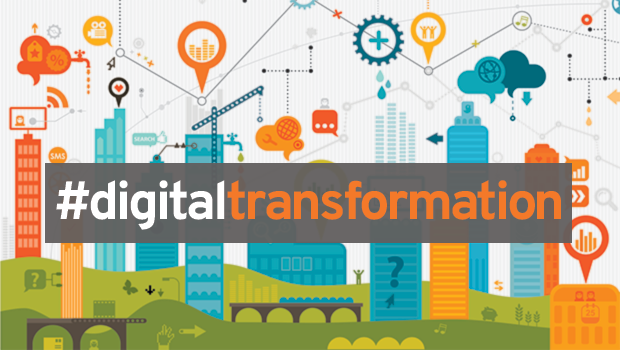advertisement
COVID-19: 5 Digital Transformation Strategies
In 1999, the world was at the cusp of a significant technology change. The onset of Y2K. The phenomenon left…

In 1999, the world was at the cusp of a significant technology change. The onset of Y2K. The phenomenon left the world puzzled about what would happen when the clock struck midnight on December 31 of that year. Engineers and programmers worked frantically to make sure computer dates rolled-over at midnight. That event, two decades ago, set off a change that we are still experiencing today and sadly, the current pandemic has brought us to the precipice of another. The difference is that this scenario has fatally affected humans. Technology seems to provide the opportunity to create a new work reality, meaning that the era of true digital transformation is truly upon us.
From my experiences in Technology Advisory, here are some of the opportunities that should be considered to safeguard organizations while protecting the talent that is charged with bringing many digital ideas to life.
1. Business Continuity Planning (BCP)
advertisement
According to CIO.com, Business Continuity Planning outlines procedures and instructions an organization must follow in the face of such disasters; it covers business processes, assets, human resources, business partners, etc. Most businesses have established ways in which they operate but work habits and business patterns have been disrupted by the current pandemic. With this in mind, businesses should consider where their executives and staff should work from and how the organization can measure performance. This plan should also include what is “mission-critical” to the organization and the people responsible for the enforcement to ensure that the organization is agile in the face of disruption.
2. Bandwidth Management
Bandwidth is simply how much data one can pass from one point to another in a network. The larger the bandwidth the more data can be passed through the network. Prior to the current pandemic, most organizations considered working from home as optional. Therefore, investments in technology bandwidth were not a priority for organizations, except for Business to Business transactions. Given that working from home is the new norm, investments in bandwidth for employees is going to be important in order to ensure smooth business functions. This can be done in two ways, the first is through conscious investments in added organization bandwidth – how people connect to you. Increasing the capacity of your bandwidth will allow more internet traffic to your organization while allowing the organization to support employees and clients with minimal interruptions. The other is by supporting the employees who work from home. Savings from electricity bills, printing costs and in some cases catering costs, could be re-purposed as perks to enable employees to connect easier. These seemingly small perks can increase productivity while ensuring loyalty to the brand post the pandemic.
advertisement
3. Security
This is going to be one of the hottest topics moving forward. Employers will be seeking ways to provide employee access to their systems while maintaining data integrity and security of their customers. For consulting houses, this has been the norm. Many consultants working from client sites often connect via technologies such as Virtual Private Networks (VPN) to secure their outputs. However, in the banking industry where many interactions are highly transactional, the possibility of compromised systems is quite significant as transactions require systems to be consistently reliable and accessible. Organizations will have to review their business models and make investments based on their changed conditions in order to survive this transition. Some questions that can be considered are; Does your organization have a good enterprise Security Management policy? Is there live data monitoring that can be used to identify threats? Who has permission to interact with the systems? Is there segregation of duties? What preventive measures have been put in place to minimize breaches?
4. Big Data
advertisement
Many organizations have modelled their offerings based on conventional demand for their products. The data from client preferences has therefore been highly reliant on conventional behaviors such as seasonal product demand, employee pay-days, and economic changes among other factors. The current conditions will now force organizations to re-evaluate client behavior through the use of analytical tools in order to manage changes in behavior in accordance with global personal risk elements such as the current pandemic. Prepared organizations will be evaluating themselves as well as their client base and asking the following: Can we modify our supply chains to adapt to new products? How agile is our business model? Where will our next opportunity come from? Rather than the government enforcing a change in supply chain models, big data will allow these organizations to become more proactive in addressing these critical questions if they are to survive these turbulent global times.
5. Communications
We continue to receive numerous updates from various social media platforms in the wake of this pandemic. While there are credible sources of information out there, there are also many sensationalist platforms that have curated fear and misinformation and sold it to the public. Organizations will need to become aware of the importance of protecting their brand during these dynamic times. Traditional communications and Public Relations roles will either have to be augmented or rolled into a formalized digital communications position, that can be used to curate and disperse the truth to their audience while maintaining the ethos of the organization.
So what?
Ultimately the invisible glue in all of this is change. The world has radically changed since the Y2K phenomenon. Moving forward, how we engage with organizations has to change. Before the pandemic, many organizations were struggling to find space to deal with varying employee numbers. Now, many organizations have been forced to embrace work from home concepts and are beginning to embrace the new norm. Only time will inform the stickiness of these new realities of work.
What is your organization doing to ensure its survival during the ongoing digital transition?